Posted on 7/31/2023

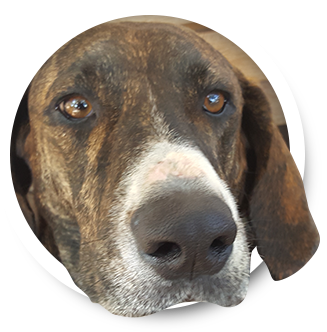
Hey Duke here and did you know that engines need to burn fuel to operate. Fuel is pumped from your fuel tank to your vehicle engine where it is squirted—or injected—into your engine's cylinders. This is the function of the fuel injectors. So today we are going inject you with knowledge of fuel injection and let's get barkin'!
There are two ways to inject fuel into an engine. Fuel needs air to burn, so in the first method, fuel is injected into a port and allowed to mix with air—before it is drawn into the cylinders. In the second method, fuel is injected directly into the cylinders and mixes with air after it enters the vehicle engine.
Direct injection engines burn fuel more efficiently than conventional vehicle engines. Some models can deliver the power of a V8 with the economy of a V6.
For example, in one family of engines, the conventional version (a V6) delivers about 250 horsepower. The direct injection version delivers over 300 horsepower and gets about the same gas mileage. The turbocharged version delivers 350 horsepower.
Why the big difference in power? Direct injection systems allow fuel to be squirted into the vehicle engine at hundreds of times the pressure of a conventional engine. This atomizes the fuel better (breaks it down into tinier droplets), which means more of it gets burned, which translates to more power for your engine. It also results in cleaner emissions.
Fuel injectors are precision instruments. They have to deliver the right amount of fuel at exactly the time the vehicle engine needs it. They are also engineered to inject fuel with a specific spray pattern. This spray pattern allows for maximum fuel efficiency and proper atomization. Direct injection engines require a much higher degree of precision than conventional engines. For this reason, they are equipped with more sophisticated computers.
When fuel injectors get dirty, their precision drops off. The spray pattern won't be precise, and the timing of fuel delivery may be off. This decreases fuel efficiency and fuel economy as well as delivering less power to the engine.
Los Altos residents should understand that fuel injectors are not cheap to replace. Direct injection fuel injectors are even more . And we're talking a mortgage payment to buy a set of new fuel injectors for a diesel engine.
So keeping your fuel injectors clean is just good auto advice. The best way to do this is to change your air and fuel filters regularly and practice other habits of good vehicle care and preventive maintenance. Cleaning additives in your fuel can also help.
If you do end up with gum or varnish in your fuel system, you'll need a professional fuel system cleaning. This will clean out your whole system, including the injectors. The good news is that with proper maintenance, Los Altos drivers will enjoy better fuel economy and their fuel injectors will last for a long time.
Contact us for more tips to help you improve your performance and safety and tell them Duke sent ya,
Duke

Allied Auto Works
2073 Grant Road
Los Altos, CA 94024
650.968.7227
https://www.alliedautoworks.com/
Posted on 7/24/2023

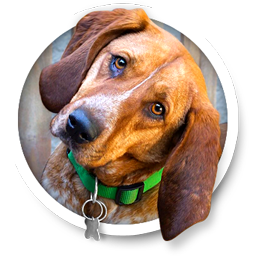
I'm just sitting here watching the wheels go round and round. I really love to watch them roll. Hi, Cayenne here today, we are going to bark about tire tread depth and when is it time to replace those worn-out tires. So let's roll into this and start barkin'!
Most Los Altos drivers know that tires wear out and that the wear has to do with tread depth. Most of us have heard that “bald” tires are dangerous, but most of us picture a tire with no tread at all when we think of a bald tire. And when we take our vehicles in for preventive maintenance, the technician tells us they need to be replaced long before all the tread is worn off. Just how much tire tread wear is too much? And how can you tell? Tires and their condition is important to the safe handling of a vehicle, so it's for Los Altos vehicle owners to know the answers to these questions.
First of all, it's important to understand that there may be a legal limit to tread wear. If your tires are worn past this limit, you have to replace them to be in compliance with CA auto safety laws. That's why measuring your tread wear is part of a vehicle safety inspection.
In some jurisdictions, tread must be at least 1.6 millimeters or 2/32 of an inch thick. This standard has been in effect since 1968. But this standard has recently been called into question, and some CA professionals are arguing that it be changed.
The safety issue that has brought this standard under scrutiny is the ability of a vehicle to stop on a wet surface. When a vehicle has trouble stopping, most Los Altos drivers immediately look at the brakes as the source of the problem. But tires are crucial to safe stopping distances because they provide the traction required in a stop.
A tire's contact with the road surface creates traction, which allows for effective braking. On a wet surface, a tire only has traction if it can get to the road's surface. So tire tread is designed to channel water out from under the tire to allow it to stay in contact with the road. If the tire can't shift the water, then it starts to “float.” This condition is called hydroplaning. It is very dangerous for Los Altos drivers since the vehicle won't stop no matter how hard the driver presses the brakes. Steering control is also lost.
A recent study tested the stopping ability of a passenger car and a full-sized pick-up on a road surface covered with only a dime's depth of water (less than a millimeter). The vehicles were traveling at 70 mph (112 kph) when they stopped on the wet surface. At 2/32 (1.6 mm) tread depth, the stopping distance was double that of a new tire. The passenger car was still traveling at 55 mph (89 kph) when it reached the stopping distance it experienced with new tires.
Let's suppose that you're on a busy Los Altos road in a light drizzle, and a vehicle stops suddenly in front of you. You just bought new tires and you brake hard, missing the vehicle with only inches to spare. If you hadn't bought those new tires, you would have crashed into that vehicle at 55 mph (89 kph). That is a major difference.
What if your tires had a tread depth of 4/32 (3.2 mm)? You would have crashed into that vehicle at 45 mph (72 kph). Still not a good situation. But it's better.
Now what if you were driving that pick-up truck? You wouldn't have missed that vehicle in the first place, and you would have crashed at higher rates of speed in both of the other scenarios. The heavier your vehicle, the longer its stopping distance. It's a matter of physics.
The results of this test have led Consumer Reports and others to ask that the standard for tread wear be changed from 2/32 (1.6 mm) to 4/32 (3.2 mm). The increased standard will improve safety on the road and save lives here in CA and nationally.
Of course, until the standard changes, you'll have to decide whether you'll be willing to replace your tires a little sooner.
You can use an American quarter to tell if your tread wear is down to 4/32 (3.2 mm). Place the quarter into the tread with George's head toward the tire and his neck toward you. If the tread doesn't cover George's hairline, you're under 4/32 (3.2 mm). With a Canadian quarter, the tread should cover the digits of the year.
You can measure the 2/32 inch (1.6 mm) tread wear with a penny. If the tread touches the top of Abe's head, it's at 2/32 (1.6 mm). Tires are super important when it comes to vehicle care. But their condition has a major impact on safety. We need to decide whether to sacrifice safety for economy. Keeping our tread wear above 4/32 in (3.2 mm) is good auto advice.
I'm just sitting here watching the wheels go round and round
I really love to watch them roll
No longer riding on the merry-go-round
I just had to let it go ~John Lennon
Cayenne

Allied Auto Works
2073 Grant Road
Los Altos, CA 94024
650.968.7227
http://alliedautoworks.autotipsblog.com
Posted on 7/17/2023

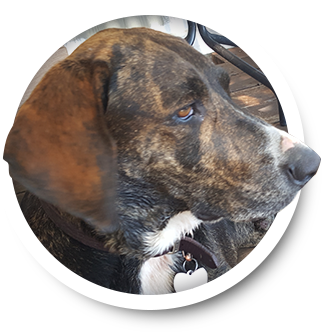
Hello Los Altos, Duke here, and California residents may have heard that vehicles don't need their oil changed as often as they used to. That's true. But it's not the whole story. So today, I am going to answer, "What is the Risk of High Oil Change Intervals?" So let's slip into this slick subject.
Owing to improved engine technology and higher oil quality, most newer vehicles can go longer between oil changes than their older counterparts.
So what is a good time interval for oil changes? How do CA residents know when to change it? And why do we change it in the first place?
Oil lubricates a vehicle's engine, which protects it from friction damage. Over time the oil can collect dirt and contaminants that inhibit its performance. But dirty oil isn't the only problem for CA residents. What you really want to avoid is called oil sludge.
Oil sludge is caused by moisture in the oil and by hot spots in your engine that burn off oil. This sludge is a gooey gel that can clog engine passageways, which can block lubricants from reaching vital engine parts. The result can be engine wear or even engine failure.
Sludge forms rapidly in an engine that is driven under what are termed “severe conditions.” A vehicle's owner's manual includes recommendations for oil change intervals under both normal and severe conditions. Severe conditions include towing a trailer, driving in polluted or dusty conditions, hauling heavy loads, or using a car top carrier. Also, extremes in climate, such as very hot or very cold temperatures, constitute severe conditions for vehicles.
Some people may be tempted to overlook the severe conditions preventive maintenance schedule in their 's owner's manual because of the word “severe.” But consider this: the most common form of severe conditions is stop-and-go driving, rush hour commuting, or only driving your vehicle on short trips around the area.
When a vehicle only makes trips under four miles/six kilometers or under 10 miles/16 kilometers in freezing conditions, the engine doesn't get warm enough for condensation in the oil to evaporate. The result? You get oil sludge build-up. If your driving patterns are the same as any of the conditions that count as severe, you should be changing your oil more frequently under the severe conditions schedule.
The team at Allied Auto Works in Los Altos can help you understand what type of oil to use in your vehicle and how it can affect your oil change schedule. Some vehicles are filled with synthetic or synthetic-blend oil at the factory. The owner's manual will recommend that this oil continue to be used in the vehicle, and oil change intervals will be based on this type of oil.
Also, if your vehicle uses conventional oil, but you have some of those severe driving habits we talked about, you can switch to a premium-grade oil to give your vehicle extra protection. The answer to why we change our oil is fairly simple: to protect our engines and make our vehicles last longer and run better. But the answer to how often to change our oil is more complex: it depends on our vehicle, our driving habits, where we live, and what kind of oil we use.
When it comes to oil changes, a little information can go a long way to helping people save money and extend the life of their vehicles. Stay safe, and stay on the road.
Remember oil always be here for you
Duke

Allied Auto Works
2073 Grant Road
Los Altos, CA 94024
650.968.7227
Posted on 7/10/2023

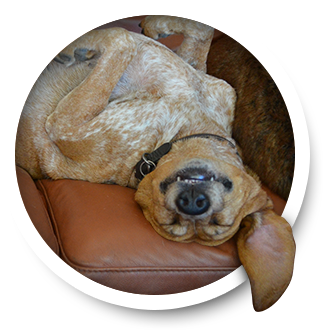
Hello Cayenne here on this beautiful summer day and I can see for miles and miles. If you're gonna drive around the Los Altos area, you've got to be able to see! So having a good set of windshield wipers is extremely important. We've all experienced the frustration and fear of not being able to see clearly during a storm or when our windshield is just dirty, especially with all the construction being built around town. It gets on our windshield and blocks our beautiful view of California. So today, we are going to wipe our windshields clean and bark about wiper blades. Let's get barkin'!
It seems like your wiper blades are always at their worst when you need them the most. But windshield wipers are like most other vehicle parts– they require regular attention in order to work their best.
You really ought to replace your wiper blades twice a year, in the spring and the fall. If it's going to be a particularly harsh winter in CA, you may even want to get special winter blades in the fall. Winter blades are designed to resist freezing.
Speaking of winter and freezing conditions, if your car has been sitting for a long time and the windshield becomes frozen, don't use your wipers to clear off snow and ice. That'll just tear up the blades and cause them to wear out more quickly. It may even damage the wiper motor.
Over time, wiper blades become hard and brittle and then tear. They also lose their flexibility and just don't cover the windshield effectively.
Worn wiper blades aren't just a safety hazard; they can also scratch your windshield. That may require replacing the entire windshield, a big cost for such a little part.
Replace worn blades right away. Our professionals at Allied Auto Works can provide you with a quality replacement blade. They cost about the same as they would at the store, but installation is included at Allied Auto Works in Los Altos.
Of course, you also need windshield washer fluid to help your blades do their work. Even though Allied Auto Works will top off the washer fluid with a full-service oil change, it is a good idea to have some extra fluid at home or in the car if you are on a long trip.
Always use windshield washer fluid. Plain water, even that fancy bottled water, may freeze in the fluid reservoir or on the windshield itself, making things worse. Besides, water won't do a good job of cleaning your windows.
And remember that some vehicles have two reservoirs: one for the windshield and one for the back window, which may be under the hood or somewhere in the back.
So follow these tips to keep your windshield clear and your eye on the road, and give us a call.
A perfect summer day is when the sun is shining, the breeze is blowing, the birds are singing, and the lawn mower is broken. ~James Dent, in The Charleston Gazette, as quoted in The Reader's Digest, 1994
Cayenne

Allied Auto Works
2073 Grant Road
Los Altos, CA 94024
650.968.7227
https://www.alliedautoworks.com/
Posted on 7/10/2023

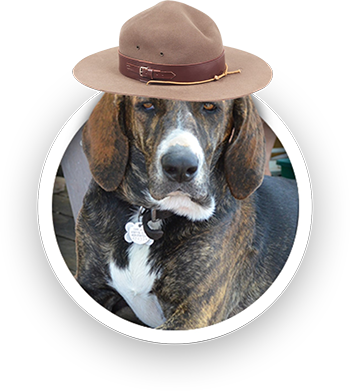
Duke here and I consider myself a handsome dog or as the ladies tell me I am one "Hot Dog". Seriously though, some things can be too hot to handle and vehicle overheating is one of those HOT topics. So today we will bark about Vehicle Overheating and make you feel, well more cool about it. Let's get barkin'!
In the hot weather, seeing steam coming from the engine compartment is something we all dread. No one wants that to happen to them. But if you know the signs of overheating and how to deal with it, you may be able to reduce the risk of damage to your vehicle, maybe even prevent getting stranded on the road.
Besides the steam coming out of the engine compartment, here are a few signs of overheating. Your vehicle has a heat gauge that may have a needle that can go into a red zone or up to the "H" (for High) position. You may smell odors, perhaps a burning (could be hot oil) or a sweet smell (engine coolant leaking).
When you encounter any of those signs, you know you have to do something to keep the engine as cool as possible to avoid potentially catastrophic damage. Turn off the air conditioning and turn up the heat. While that last part may sound odd, it helps draw heat out of the engine.
If you can do it safely, pull off the road to a spot away from traffic. Turn off the engine so it can cool down for a few minutes. You may want to call for help at this point, then switch on the key to "accessory" position to see if the engine has cooled down to the normal range. You may have to have your car towed to a service facility or, if there's one nearby, you may be able to slowly drive to it. But keep your eye on the heat gauge and immediately stop if it starts to overheat again.
The best hedge against engine overheating is regular maintenance. When the cooling system and other engine components are working like they should, your chances of an overheated engine are drastically reduced. Your service facility will keep their eyes open for leaking hoses, cracked belts, rusted pipes and other things so they don't fail at the most inopportune time.
I leave you with my HOT joke for this week,
It’s so hot the cows are producing evaporated milk.
Duke

Allied Auto Works
2073 Grant Road
Los Altos, CA 94024
650.968.7227
https://www.alliedautoworks.com/